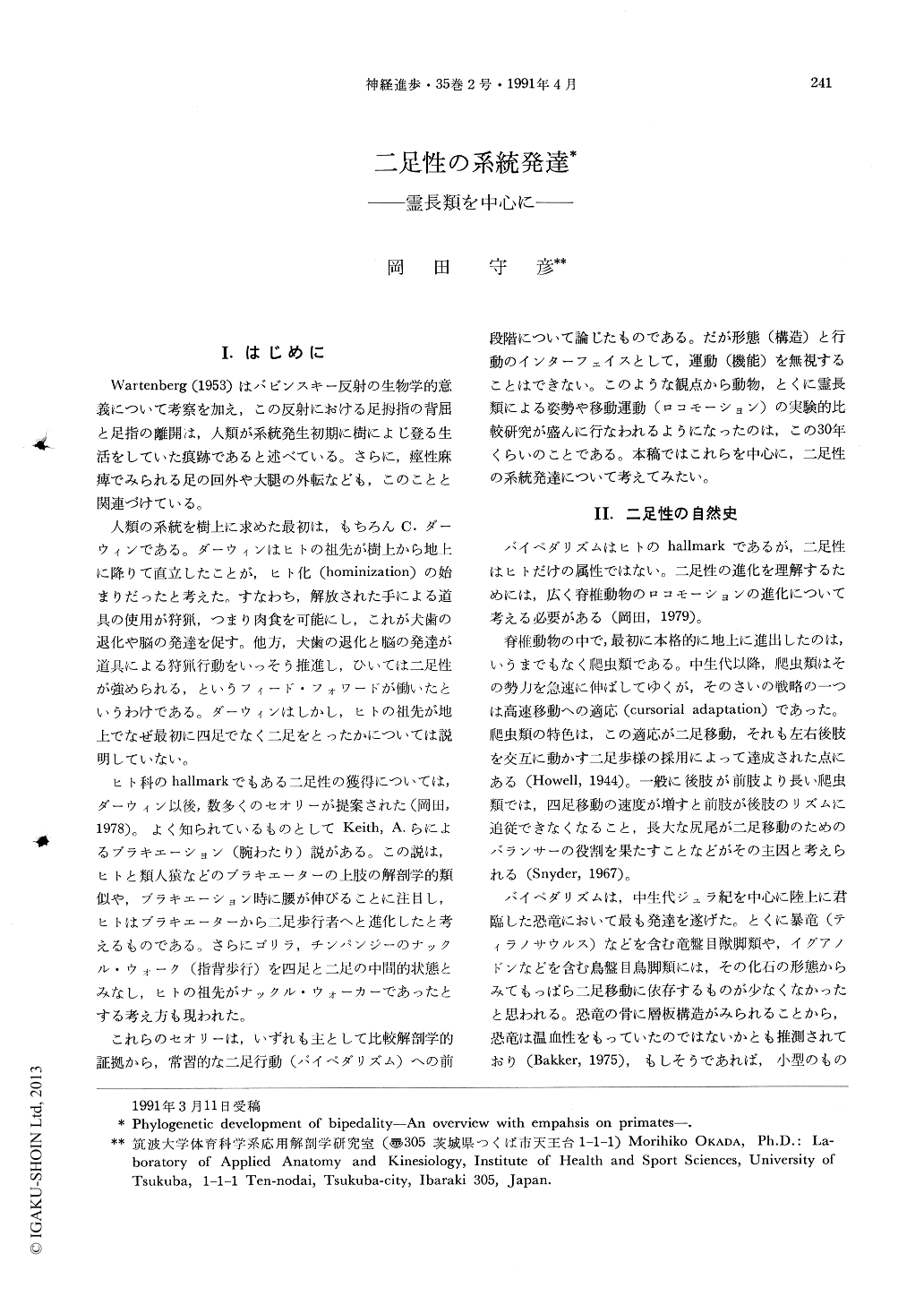Japanese
English
- 有料閲覧
- Abstract 文献概要
- 1ページ目 Look Inside
I.はじめに
Wartenberg(1953)はバビンスキー反射の生物学的意義について考察を加え,この反射における足拇指の背屈と足指の離開は,人類が系統発生初期に樹によじ登る生活をしていた痕跡であると述べている。さらに,痙性麻痺でみられる足の回外や大腿の外転なども,このことと関連づけている。
人類の系統を樹上に求めた最初は,もちろんC. ダーウィンである。ダーウィンはヒトの祖先が樹上から地上に降りて直立したことが,ヒト化(hominization)の始まりだったと考えた。すなわち,解放された手による道具の使用が狩猟,つまり肉食を可能にし,これが犬歯の退化や脳の発達を促す。他方,犬歯の退化と脳の発達が道具による狩猟行動をいっそう推進し,ひいては二足性が強められる,というフィード・フォワードが働いたというわけである。ダーウィンはしかし,ヒトの祖先が地上でなぜ最初に四足でなく二足をとったかについては説明していない。
An attempt was made to review and discuss the phylogenetic development of bipedality. First discussion focussed on the reptilian bipedalism as a cursorial adaptation. Avian bipedalism was excluded from the discussion. In the second discussion, comparison was made between the bipedal standing postures in primates and humans with respect to the vertical line including the center of gravity in relation to the lower limb joints. Hip-flexed standing posture characteristic to primates was interpreted in terms of the muscular load as a compromise between the torque imposed on the hip joint and the leverage of the hip extensor muscles. Third discussion reviewed the experimental works conducted by Japanese researchers. They discriminated two different patterns in the walking posture, foot action, joint motion, EMG and floor reaction force of quadrupedal and bipedal walking among five species of primates; the chimpanzee, gibbon and spider monkey, whose locomotor behaviors correspond to the antipronograde ones as defined by Stern (1972), were poor walkers quadrupedally but good walker bipedally; conversely, the baboon and macaque, behaviorally Stern's pronograde type, were good walkers quadrupedally, but poor walkers bipedally. Finally, significance of human acquisition of bipedalism in terrestrial adaptation was briefly discussed. A tentative hypothesis for the acquisition was given incorporating the foregoing results and relevant findings by various authors.

Copyright © 1991, Igaku-Shoin Ltd. All rights reserved.


